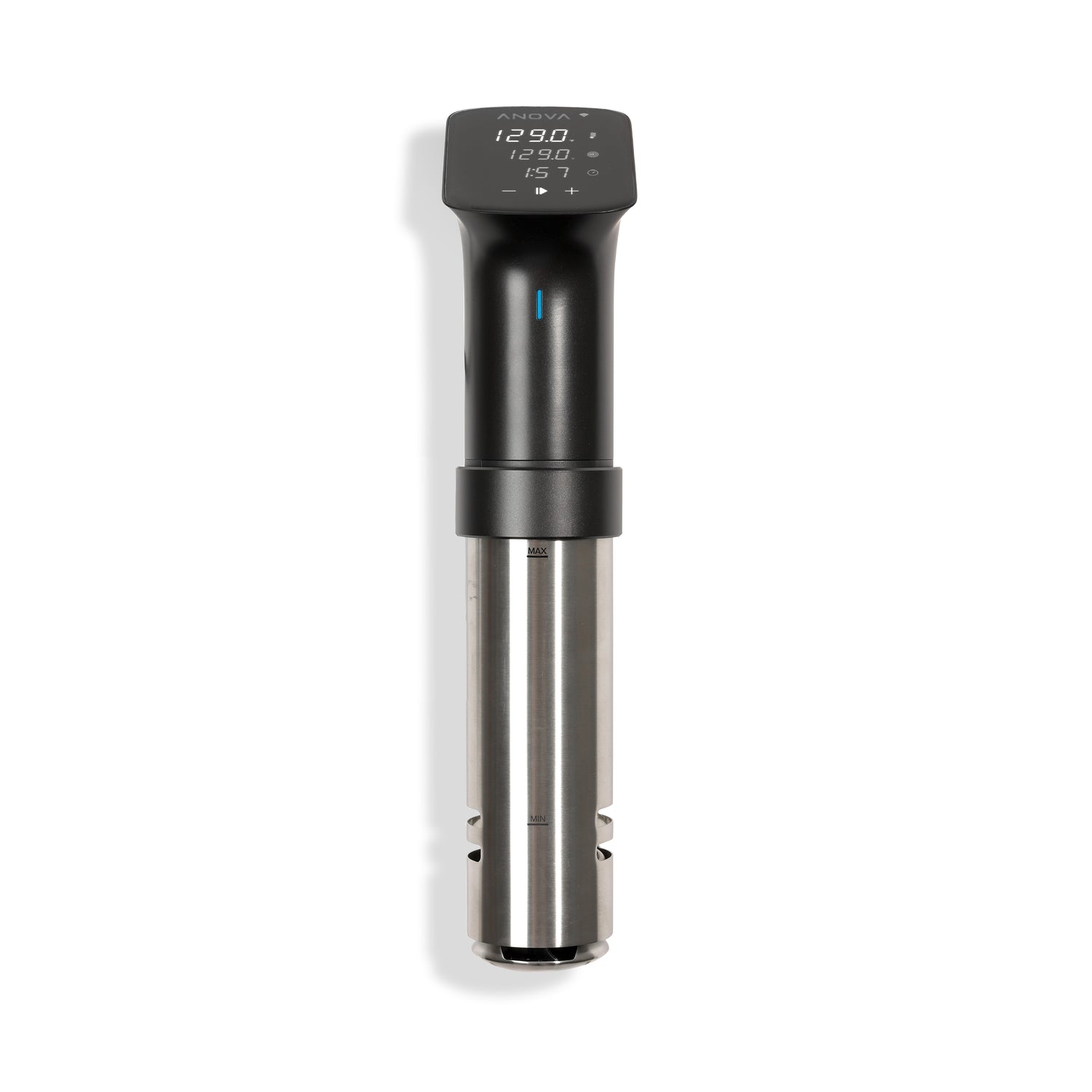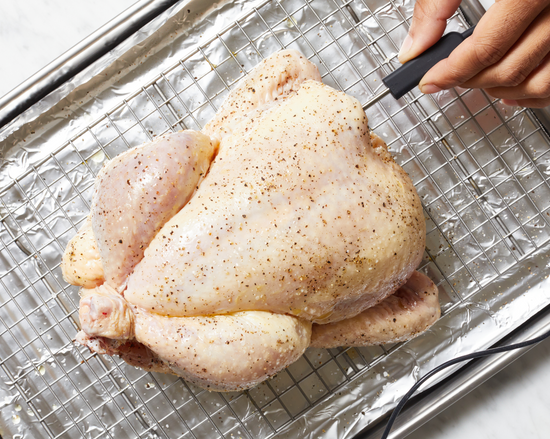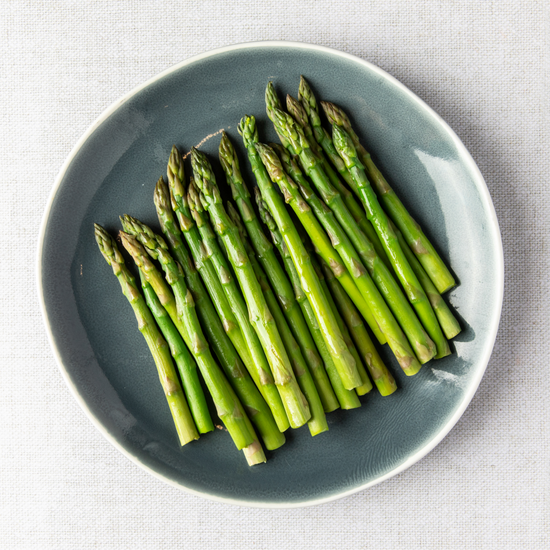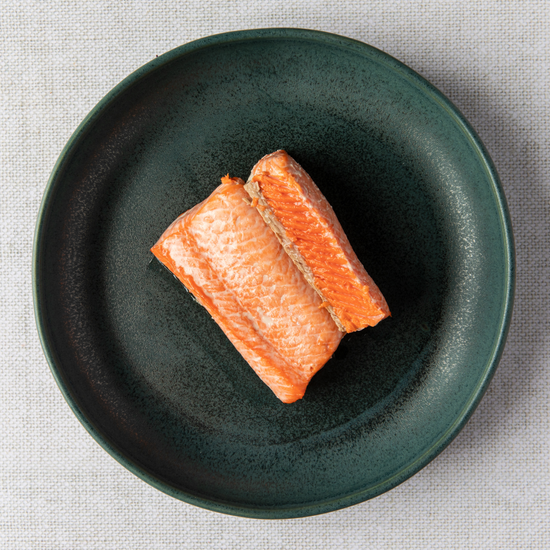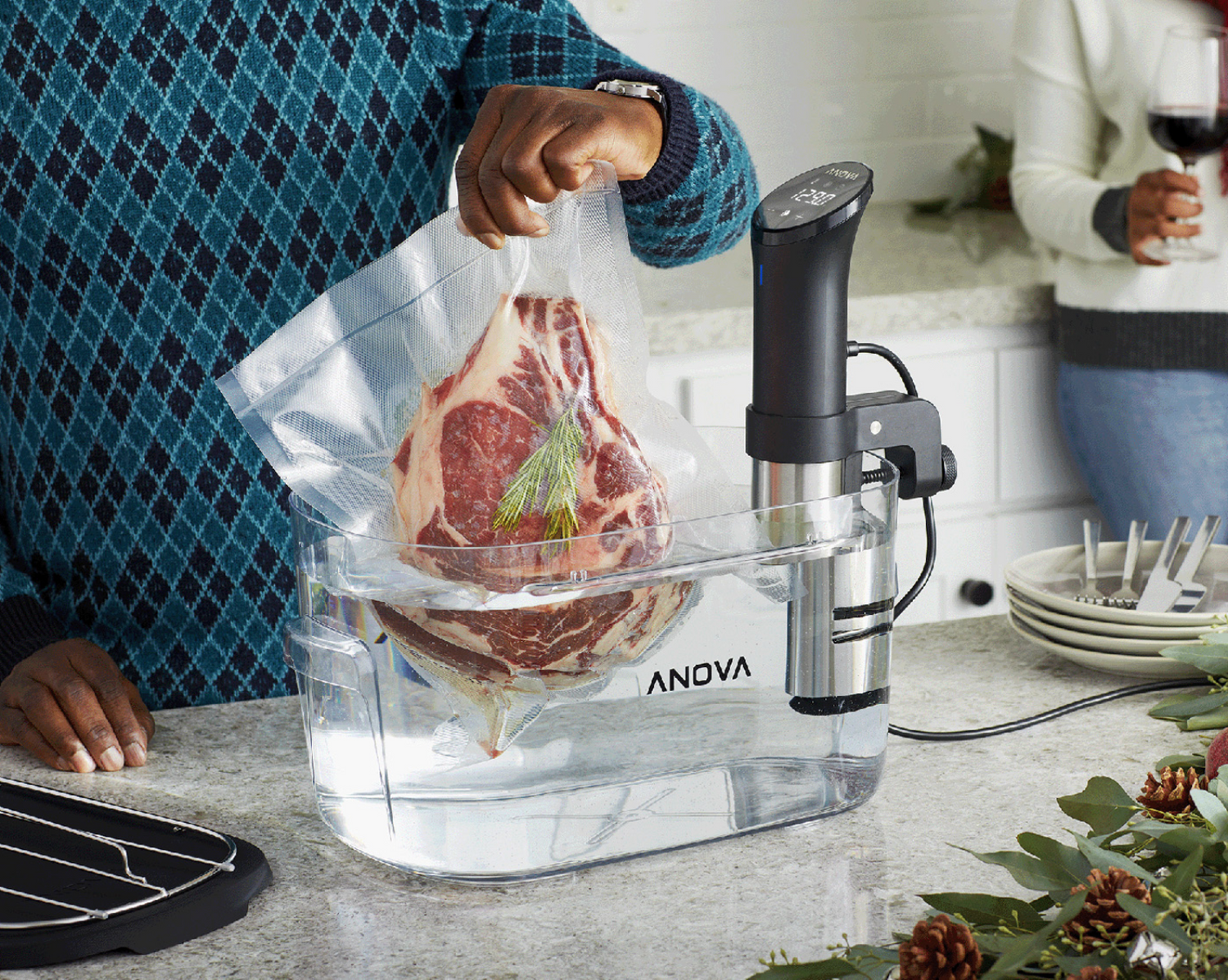
Traditional Sous Vide
Many traditional cooking techniques use a very hot environment, such as an oven, a grill, or a skillet, to heat your food. It’s your responsibility, as the cook, to remove your food from the heat at exactly the right moment so the inside reaches the perfect doneness. Sous vide, on the other hand, is a cooking technique that uses extremely precise temperature control to produce edge-to-edge perfect results.
Traditionally, sous vide cooking uses a water bath, with temperature controlled by devices such as the The Anova Precision® Cooker, as the cooking environment. The Precision® Cooker maintains the precise target cooking temperature you set, and you seal your food in a bag before putting it into the temperature-controlled water bath, so it doesn’t get waterlogged.

Sous Vide in the Anova Precision™ Oven
Because of the way we’ve designed the temperature sensors and humidity control in the Anova Precision™ Oven, you can use it to cook sous vide — without needing to heat up a pot of water or vacuum seal food into bags. The oven will precisely maintain the cooking temperature you set. And because you’re no longer cooking in a water bath, you’ve got some new options for your sous vide strategy.
How Sous Vide Mode Works
-
The secret to sous vide mode lies in understanding the difference between wet-bulb and dry-bulb temperatures.
Dry-bulb temperature is what you’re most used to seeing. This is what is measured in traditional ovens — the temperature of the air circulating in the oven cavity. Wet-bulb temperature, on the other hand, is the temperature on the surface of the food as water evaporates off of it as it cooks. It’s the temperature your food is actually experiencing, and it is always cooler than the air surrounding it. (Think of it similarly to the way in which your body cools down as it sweats on a hot day. As moisture leaves your skin, it cools off.) This means that the surface temperature of your food is always going to be lower than the dry-bulb temperature in your oven.
The Anova Precision™ Oven is able to measure both dry-bulb and wet-bulb temperatures, and to calibrate the target oven temperature based on these readings.
-
The Precision™ Oven has two dry-bulb sensors as well as an innovative wet-bulb sensor. It’s located in the back-right corner of the oven and is a very small water reservoir with a temperature sensor suspended within it.
As the oven heats up, water evaporates from that reservoir just as it evaporates from the surface of your food. The corresponding temperature that the sensor measures is the exact same temperature your food experiences.
Knowing the temperature your food is experiencing and keeping the oven temperature in line with this experience is critical for sous vide-style cooking.
In addition, the Anova Precision™ Oven is capable of maintaining consistent, low temperatures. This is a trademark of sous vide cooking, and not something traditional ovens are good at (or even able to do). And, with the included food probe, you can keep a close eye on your food’s internal temperature instead of having to guess when it has reached its target doneness. This feature opens up a wide range of possibilities not possible with traditional sous vide cooking.
Dry Sous Vide
-
Traditional sous vide cooking always takes place at 100% relative humidity. In the sealed environment of a bag, the water from your food begins to evaporate as it starts heating. Before long, the tiny amount of air in the bag is saturated with moisture so it reaches 100% relative humidity.
In the Anova Precision™ Oven, you can replicate that environment by turning on sous vide mode and setting the steam to 100%. The oven will maintain whatever cooking temperature you set and raise the relative humidity inside the oven to 100%.
The secret to sous vide mode lies in understanding the difference between wet-bulb and dry-bulb temperatures.
Dry-bulb temperature is what you’re most used to seeing. This is what is measured in traditional ovens — the temperature of the air circulating in the oven cavity. Wet-bulb temperature, on the other hand, is the temperature on the surface of the food as water evaporates off of it as it cooks. It’s the temperature your food is actually experiencing, and it is always cooler than the air surrounding it. (Think of it similarly to the way in which your body cools down as it sweats on a hot day.
-
As moisture leaves your skin, it cools off.) This means that the surface temperature of your food is always going to be lower than the dry-bulb temperature in your oven.
For plenty of food, cooking in a wet sous vide environment is ideal. Meats and vegetables turn out perfectly and evenly cooked, and if you want to sear them after cooking, you can pat them dry before finishing over high heat. But for some foods, particularly foods with skin, the wet sous vide environment is not ideal. Perhaps you’ve experienced the rubbery skin produced by cooking poultry in a sous vide bag, for instance. Once waterlogged, it’s an uphill battle to get that skin crispy.
In the Anova Precision™ Oven, you can cook sous vide without adding humidity. The food will still experience the correct cooking temperature, but the oven won’t generate any steam to saturate the air. This means that the surface of your food will stay dry during the cooking process, allowing for better crisping in a subsequent, high-heat cooking stage. Our roast chicken recipe is a great example of this technique in action.
Sous Vide Express™
-
Sous vide produces great results, but sometimes you want to trade absolute perfection for an increase in cooking speed. This is where the food probe gives you options.
In traditional sous vide cooking, a steak, for example, is fully cooked when the middle of the thickest part reaches the desired doneness temperature. But when the steak is sealed in a bag, it’s impractical to measure the core temperature of your foods directly — poking a hole through the bag to insert a probe thermometer is a hassle at best. Instead, sous vide cooking tends to happen via the equilibrium method, where you set the water bath to the desired doneness temperature and wait out the cooking time prescribed by reference tables. This process almost always requires a long cooking time.But in the Anova Precision™ Oven, where you no longer need to bag your food, that changes.
-
As you might imagine, there’s a bit of a tradeoff. The closer the oven temperature is to the probe temperature, the more gently the food cooks and the more uniform the doneness will be from edge to edge. The higher the oven temperature, the less uniform the doneness will be. Envision an extreme case: a thick roast cooked under a hot broiler. It will cook quickly. But if you were to cut into that roast, you’d notice a gradient of doneness from rare in the center to gray and overcooked at the edge.
So if you want to speed up cooking, consider setting an oven temperature just slightly above the target probe temperature. A good rule of thumb is 5°F (2.5°C) for every pound (450g) of food. For foods weighing less than 1 pound (450g), stick with 5°F (2.5°C).

How to use Sous Vide Mode
From the oven handle, you can activate or deactivate sous vide mode by touching the temperature mode icon. When sous vide mode is active, you’ll see the corresponding label light up beside it. Using the Anova Oven app, you can toggle sous vide mode on or off when setting a cooking stage.
When sous vide mode is on, the maximum temperature you may set is 212°F (100°C). When sous vide mode is off, you can set a temperature up to 482°F (250°C). Sous vide mode also changes the behind-the-scenes behavior of steam generation.
